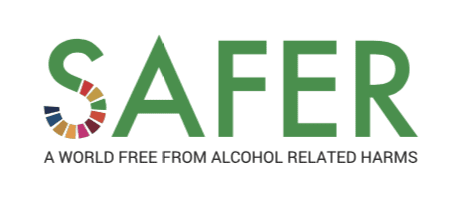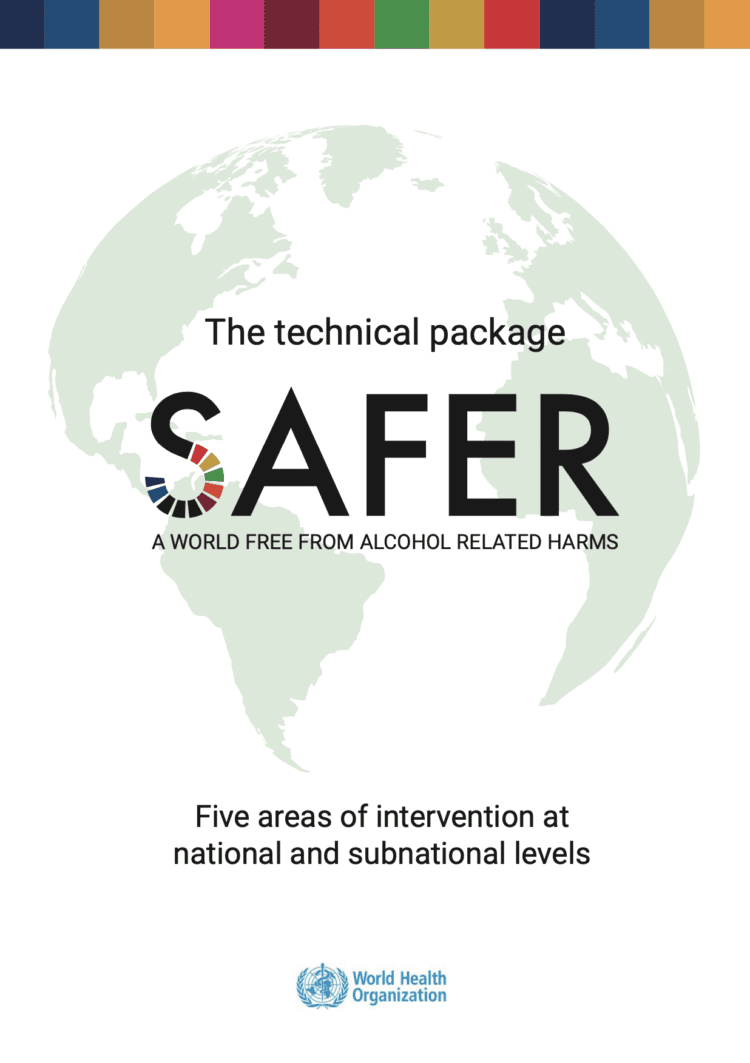WHO: New Technical Guide for Alcohol Policy
The World Health Organization (WHO) has released a brand new technical document guiding alcohol policy formulation. The new technical guide comprises the five most cost-effective and high-impact strategies that help governments to prevent and reduce alcohol harm and related health, social and economic consequences.
The new technical package is part of WHO’s work with the SAFER initiative and provides another important tool for policy-makers to step up their efforts in formulating and implementing evidence-based, cost-effective and high-impact alcohol policy solutions.
The SAFER initiative
 The WHO, in collaboration with international partners, including IOGT International, launched the SAFER initiative in 2018 alongside the United Nations third high-level meeting on the prevention and control of NCDs.
The WHO, in collaboration with international partners, including IOGT International, launched the SAFER initiative in 2018 alongside the United Nations third high-level meeting on the prevention and control of NCDs.
The objective of the initiative is to provide support for Member States in preventing and reducing alcohol harm by strengthening the ongoing implementation of the WHO Global Alcohol Strategy and other WHO and United Nations instruments – including WHO’s Global action plan for the prevention and control of NCDs and the United Nations’ Sustainable Development Goals (SDGs) target 3.5 (i.e. Strengthen the prevention and treatment of substance abuse, including narcotic drug abuse and harmful use of alcohol).
Five key alcohol policy interventions
 The technical package for the SAFER initiative focuses on five key alcohol policy interventions that are based on accumulated evidence of their impact on population health and their cost-effectiveness. Further, the SAFER initiative recognizes the need to protect public health-oriented policy-making from interference by the alcohol industry, as well as the importance of a strong and sustainable monitoring system to ensure accountability and track progress in the implementation of the SAFER interventions.
The technical package for the SAFER initiative focuses on five key alcohol policy interventions that are based on accumulated evidence of their impact on population health and their cost-effectiveness. Further, the SAFER initiative recognizes the need to protect public health-oriented policy-making from interference by the alcohol industry, as well as the importance of a strong and sustainable monitoring system to ensure accountability and track progress in the implementation of the SAFER interventions.
Mainstreaming alcohol policy
This SAFER technical package is aimed at government officials with responsibility for developing policy and action plans to prevent and reduce the harm done by alcohol. Given that alcohol-related harm extends beyond public health, and that preventing and reducing such harm requires multicomponent action that involves many stakeholders, this guidance should also be of use to those working in sectors other than health.
Sectors relevant to alcohol control include those responsible for:
- alcohol pricing and tax policy;
- licensing the production, distribution and sale of alcohol;
- regulating and monitoring commercial communications on alcohol;
- identifying and eliminating illegal production and trade in alcohol;
- transport and driving under the influence of alcohol policy;
- commissioning health services for early identification, brief interventions and treatment of alcohol use disorders if this is outside the health sector; and
- collecting and analysing data and reporting on alcohol-related indicators.
The breadth of this group of sectors also implies that persons with prime responsibility for an action plan on alcohol will need to coordinate and communicate their efforts with a wide range of colleagues from different government departments and institutions – some of which may have a different understanding of, and goals for, alcohol policy.
Jurisdictional responsibilities and competencies for different elements of alcohol policy vary from country to country. As a result, the contents of the technical package will be relevant not only to people working at national level but also for those working at subnational, municipal or local levels. This implies that persons with prime responsibility for a national action plan on alcohol will need to coordinate and communicate with colleagues from a wide range of jurisdictional levels to ensure that the overall policy is integrated seamlessly across the different levels, and that national legislation and regulations facilitate rather than impede action at the subnational levels, as well as the other way around.
—
Citation
The SAFER technical package: five areas of intervention at national and subnational levels. Geneva: World Health Organization; 2019. Licence: CC BY-NC-SA 3.0 IGO.